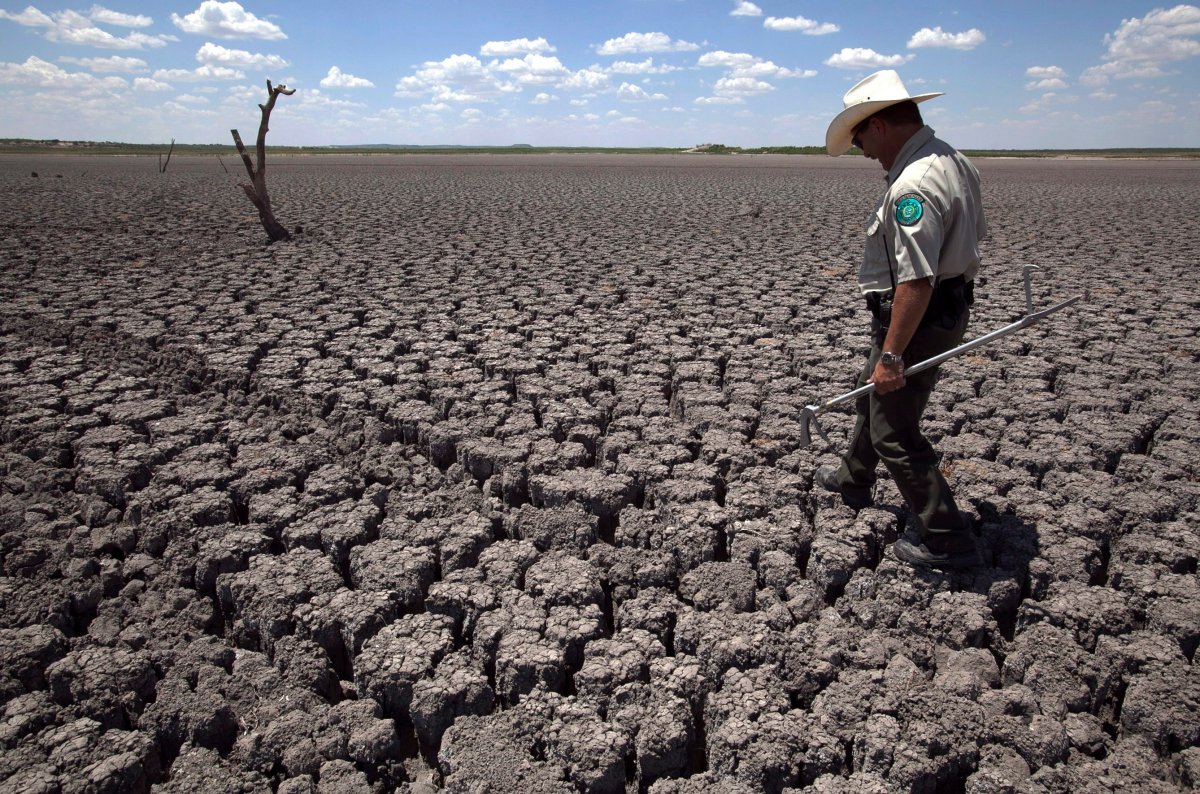A megadrought is nipping at the heels of the American southwest and it will have dire consequences, climatologists warn.

Those consequences will reach far beyond the southwestern U.S.: it is likely to be felt around the world, and certainly here in Canada.
Imagine, if you will, a drought that would make the current five-year one in California — a drought that has resulted in farmers digging up crops, reservoirs being sucked dry and water bans being put into place — pale by comparison. Instead, this would be a megadrought, one that lasts decades.
READ MORE: Drought kills 66 million trees in California’s Sierra Nevada
A study published in the journal Science Advances earlier this month concluded that the American southwest is almost certain to experience a megadrought, and soon, and it won’t be from the natural variability that occurs. Instead, it will be exacerbated by the rapidly changing climate.
“Regional temperature increases alone push megadrought risk above 70, 90, or 99 per cent by the end of the century, even if precipitation increases moderately, does not change, or decreases, respectively,” the authors wrote.
There are two scenarios for the drought conditions in the southwest: one, a searing megadrought that occurs as a result of business as usual with CO2 pumped into the atmosphere at current levels. In that case, the drought would occur after 2050. In a second scenario, CO2 levels decrease and the chances drop to more of a warm megadrought. In both cases the chances are high (66 per cent in the case of the warm megadrought).
Typically a drought occurs due to a disruption of circulation patterns in the atmosphere. They can cause a significant decrease in precipitation, while increasing precipitation somewhere else.
While megadroughts occur naturally over time, the concern is that, due to increased carbon dioxide being emitted into the atmosphere, the region is being pushed toward one far sooner than would happen naturally.

“There were a series of megadroughts in the southwest in the first half of the last millennia. We think that those were most likely caused by changes in tropical ocean surface temperatures and were part of natural climate variability,” said Richard Seager, a senior research scientist at Columbia University’s Earth Institute.
“Such naturally occurring megadroughts could occur again of course, but the additional effect of rising [greenhouse gases] is tipping the odds more in favour of megadrought occurrence.”
The effects of a drought of that magnitude would be far-reaching.
Don Burn, a professor of civil and environmental engineering at the University of Waterloo in Ontario, said that Canada could expect to see economic repercussions.
New Mexico, for example, exports about $180 million worth of goods to Canada every year. In particular, they trade pasta, breads and cereal preparations worth about $15 million annually.
READ MORE: Think the California drought is bad? Worst is yet to come: study
Arizona exports roughly $1.6 billion in goods to Canada.
And it’s not just about agriculture. A long-lasting, intense drought could force companies to move out of the region to another that isn’t struggling.
And all this economic strain means that Canadians might see rising prices for goods or food.
However, it may not all be bad.
“There could be some positive scenarios as well,” said Burn. “There could be situations where our farmers could provide for others. So, our farmers could be selling crops at a higher price as well.”
WATCH: Climate change to blame for drought, food security in Africa
Megadroughts have been known to also have other consequences. Recently, researchers linked a megadrought that occurred in the late 16th century in Mexico to an outbreak of “cocoliztli” that killed roughly five to 15 million people — about 80 per cent of the population. This disease was gruesome and unrelenting.
“The symptoms included high fever, severe headache, vertigo, black tongue, dark urine, dysentery, severe abdominal and thoracic pain, large nodules behind the ears that often invaded the neck and face, acute neurologic disorders, and profuse bleeding from the nose, eyes, and mouth with death frequently occurring in three to four days,” according to the CDC.
It’s believed that spread of the disease was aided in part by persistent drought conditions that allowed rodents to spread it rapidly.
Preparing for the worst
Burn said that the region should be trying to prepare now.
“They can be storing more water in times when you have sufficient amounts,” he said. “But it would take decades to get infrastructure in place, especially if the drought has already begun.”
Seager, who wasn’t part of the study that involved Toby Ault of Cornell, said that the regions need to start thinking now about mitigating the effects such an impending drought would have.
“States in the southwest and the federal government — as well as Mexico — need to prepare for a drier climate with less water availability and prepare the way for sensible decisions to be made about improving water use in agriculture (which uses the vast majority of the used water),” he said. “What crops should be grown that provide energy and nutrition while not consuming excessive water, and how to use water for cities and industries more frugally and wisely. It can be done.”



Comments